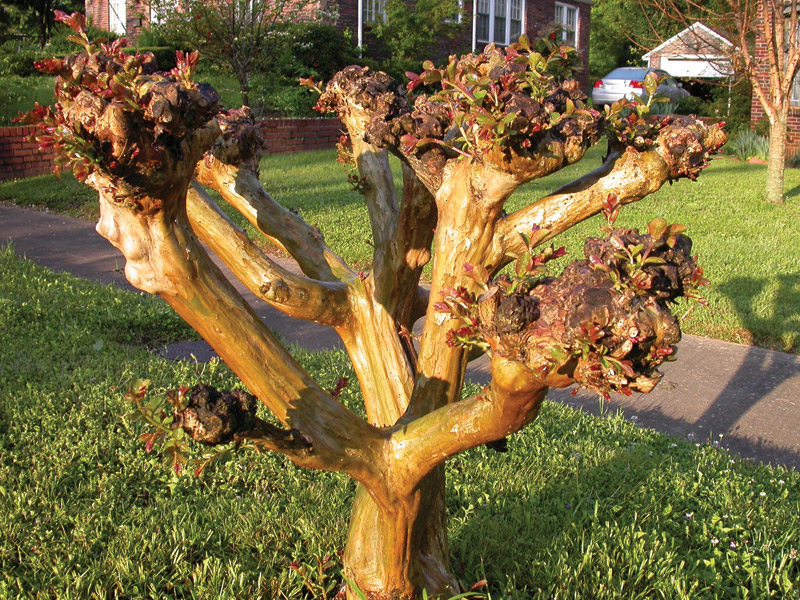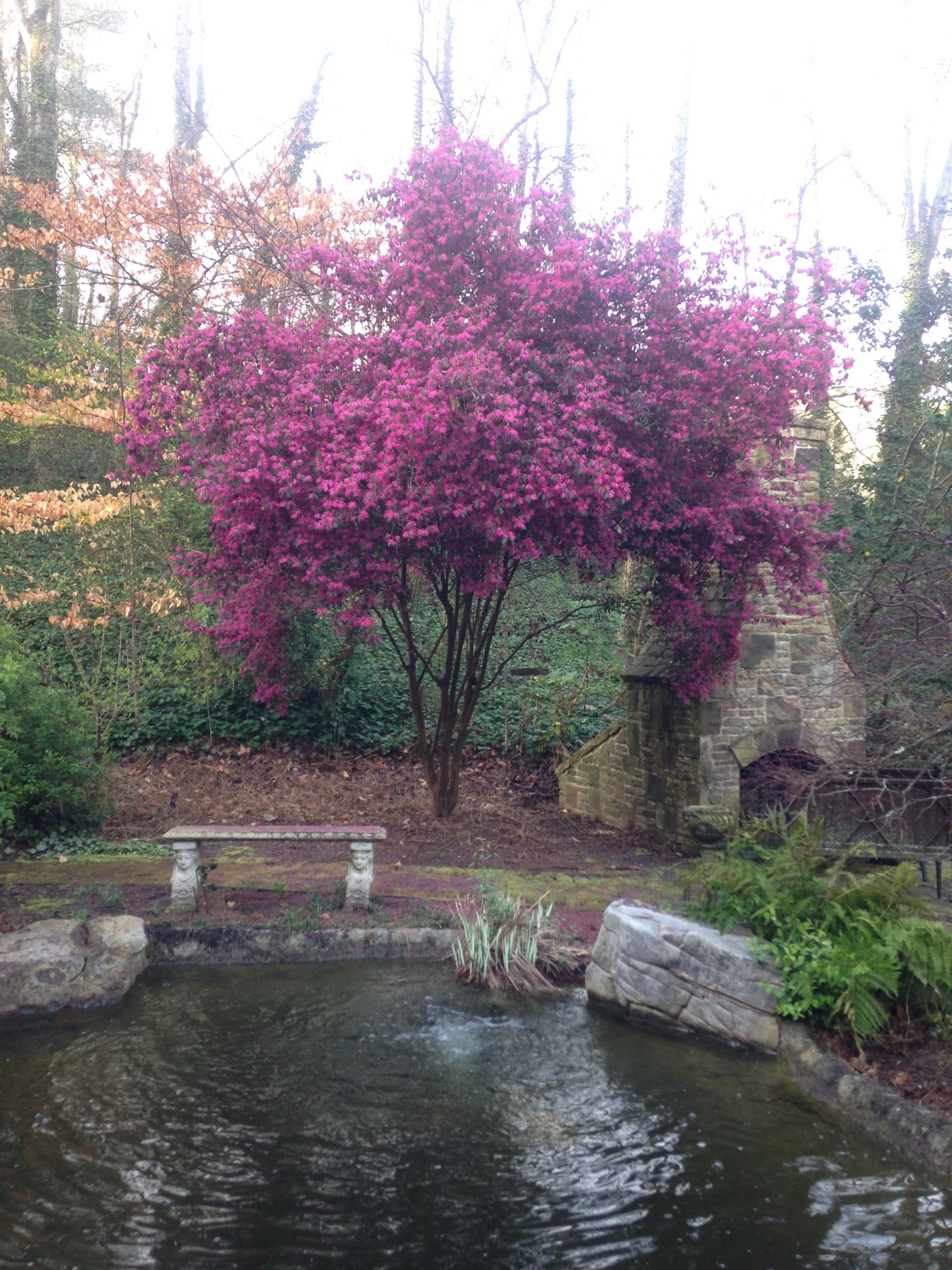At My Personal Gardener, we know pruning. We know how to prune and how not to prune. We do not participate in one of the most bizarre rituals in Atlanta Landscaping: Crape Murder. If you have driven the streets of Atlanta you have witnessed Crape Murder. Crape Murder is the pruning technique (and we use that term loosely) whereby you cut the tops off of Crape Myrtle trees. In some of the more egregious cases, half the tree may be cut off, leaving only a few bare trunks standing. We know the right way to prune a Crape Myrtle.
A well-known Professor of Horticulture asked, “If you think it’s wise to cut the tops off of your Crape Myrtle tree, why don’t you cut the tops off your Oak tree?” Of course, everyone agrees it would be silly to cut the top off your Oak tree every year, so why do it when pruning Crape Myrtles? Crape Myrtles are trees. Pruning Crape Myrtles should be similar to what you would do to any other ornamental tree. If you don’t cut off the top half of a Redbud or Japanese Maple, then you shouldn’t do so to a Crape Myrtle.
 Pruning Crape Myrtles each year is still important to promote good health and flower production.
Pruning Crape Myrtles each year is still important to promote good health and flower production.
As with any other important plant, evaluating the surroundings is the first step in pruning Crape Myrtles. The environment around Crape Myrtles will provide some insight into their health. In Atlanta landscaping we constantly deal with the issue of over-planting. Installing plants too close together may give an immediate look of maturity, but it causes serious problems down the road. Crape Myrtles are often affected by over-planting. Whether planted too close to a home or completely surrounded by foundation shrubs that block light and airflow, Crape Myrtles are frequently in sub-optimal environments.
Sub-optimal environments cause a variety of problems, some of which we can solve, some we cannot. We have far more success when trees are sited reasonably well. A little bit of breathing room and a decent amount of sun make a big difference. A Crape Myrtle that gets just enough light but shows obvious signs of Powdery Mildew should be aggressively pruned and thinned. Aggressive pruning can dramatically change the health and performance of a Crape Myrtle.
This is one example where moderate, corrective pruning on a tree would make sense. By significantly thinning the canopy of the tree we open it up for better light and airflow. More light and airflow helps the tree to naturally resist Powdery Mildew and insects. As with most everything else in life, eliminate the dark, moist environment – it breeds bad things. When pruning Crape Myrtles, the priority is to eliminate the dark, moist environment.
Monrovia is one of the most well-known growers in America. Click here to see the different varieties of Crape Myrtles.




